Related Research Articles
Sherrie Levine is an American photographer, painter, and conceptual artist. Some of her work consists of exact photographic reproductions of the work of other photographers such as Walker Evans, Eliot Porter and Edward Weston.

Douglas Huebler was an American conceptual artist.
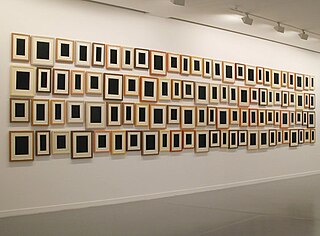
Allan McCollum is a contemporary American artist who lives and works in New York City. In 1975, his work was included in the Whitney Biennial, and he moved to New York City the same year. In the late 1970s he became especially well known for his series, Surrogate Paintings.

Allen Ruppersberg is an American conceptual artist based in Los Angeles and New York City.
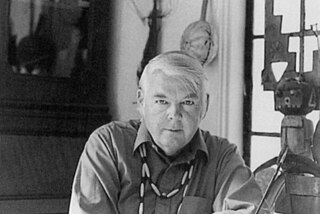
Lee Mullican was an American painter, curator, and art teacher. He was an influential member of the Dynaton Movement.
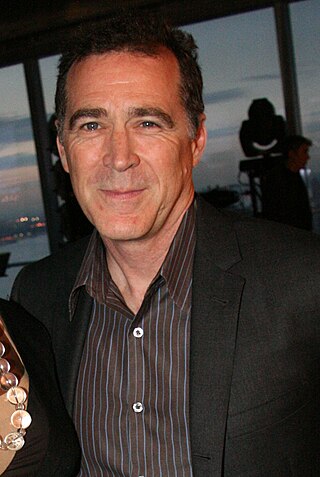
James Casebere is an American contemporary artist and photographer living in New York and Canaan, New York.

Thomas Lawson is an artist, writer, editor, and from 1991 to 2022 was the Dean of the School of Art & Design at California Institute for the Arts. He emerged as a central figure in ideological debates at the turn of the 1980s about the viability of painting through critical essays, such as "Last Exit: Painting" (1981). He has been described as "an embedded correspondent [and] polemical editorialist" who articulated an oppositional, progressive position for representational painting from within an increasingly reactionary art and media environment. Artforum called his approach to the medium "one of the most cogent and controversial" in the 80s.
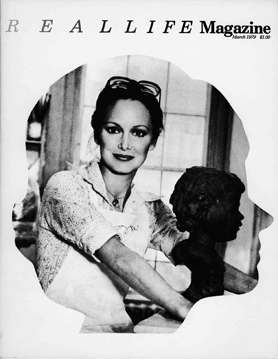
REALLIFE Magazine was a publication featuring written and visual material by and about young artists that was co-founded and published by artist Thomas Lawson and writer Susan Morgan between 1979 and 1994. It served as a clearing house for new ideas and examinations of mass media and art, while chronicling New York's developing postmodern alternative art scene. It was strongly associated with The Pictures Generation group of artists.
Maxwell Hendler is an American painter. In 1975, he became the first contemporary artist to have pictures in the collection of the Metropolitan Museum of Art in New York.
The Pictures Generation, 1974–1984 was an exhibition at The Metropolitan Museum of Art in New York City that ran from April 29 – August 2, 2009. The exhibition took its name from Pictures, a 1977 five person group show organized by art historian and critic Douglas Crimp (1944–2019) at New York City's Artists Space gallery. The artists exhibited from September 24 to October 29, 1977 were Troy Brauntuch, Jack Goldstein, Sherrie Levine, Robert Longo and Philip Smith.
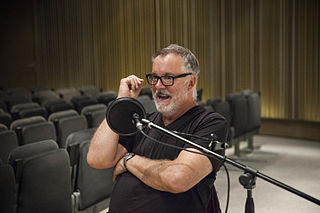
Matt Mullican is an American artist and educator. He is the child of artists Lee Mullican and Luchita Hurtado. Mullican lives and works in both Berlin and New York City.
Ilene Segalove is an American conceptual artist working with appropriated images, photography and video. Her work can be understood as a precursor to The Pictures Generation.
Gretchen Bender was an American artist who worked in film, video, and photography. She was from the so-called 1980s Pictures Generation of artists, which included Cindy Sherman, Robert Longo, Jack Goldstein, Laurie Simmons and Richard Prince, and who mixed elements of Conceptual Art and Pop Art using images from popular culture to examine its powerful codes.
Foundation for Art Resources (FAR) is a Los Angeles-based, non-profit arts organization that facilitates the production and presentation of contemporary art projects outside of the gallery structure. It was founded in 1977 by gallerists Morgan Thomas, Connie Lewallen, and Claire Copley, who transferred leadership to the artist and mediator Dorit Cypis in 1979. Since then, FAR has been overseen collaboratively by over 20 different groups of Board Members and 100 artist-Directors. Currently the longest-running extant arts collective in Los Angeles with no exhibition space, FAR partners with different private, public and educational institutions throughout Los Angeles to produce exhibitions, lectures, and performances with a focus on the relational structures between art, producers, and audience.
Scott Grieger is an American artist based in Los Angeles. He attended Chouinard Art Institute in Los Angeles, California and received a B.F.A. from California State University, Northridge in 1971. His work has been exhibited internationally for over 40 years. He is a Professor and Program Director of Painting in the Fine Arts program at Otis College of Art and Design.
Helene Winer is an American art gallery owner and curator. She co-owned Metro Pictures Gallery in New York City with Janelle Reiring. Metro Pictures closed in late 2021. Her career deeply involved the postmodern artists of the 1970s and 1980s known as the Pictures Generation. She lives in Tribeca.

Jon Peterson (1945–2020) was an American artist, most known for his "guerrilla sculpture" in the 1980s and his stylistically eclectic paintings in the 2000s. He was active in the emergence of Los Angeles’s downtown art scene—partly captured in the 1982 documentary, Young Turks—as both an artist and real estate developer. His work has been commissioned by or exhibited at Los Angeles Contemporary Exhibitions (LACE), the San Diego Museum of Art, Washington Project for the Arts, Madison Museum of Contemporary Art, Houston Art Festival, Foundation for Art Resources, and the International Sculpture Conference. It has been discussed in Artforum, Art in America, ARTnews, Los Angeles Times, The Washington Post and The Village Voice, and recognized by the National Endowment of the Arts. Museum director and one-time Artforum critic Richard Armstrong wrote that his outdoor, urban "Bum Shelters" "neatly grafted function and relevance onto the sadly barren tree of public sculpture"; critic Peter Plagens called them "hand-made, subtly irregular riff[s] on Minimalism" that injected social consciousness into "erstwhile formalist work." Reviewers liken his painting practice in the 2000s to the "polymath"-model of Gerhard Richter, interchanging diverse styles and genres as a means to understanding the nature of painting itself. Peterson died March 4, 2020, at the age of 74, and is survived by his wife, Tanarat, and son, Raymond.
Tom Jancar, Contemporary Art Dealer - Jancar Kuhlenschmidt Gallery (1980-1982) and Jancar Gallery (2006-2016) located in Los Angeles, CA.
Jancar Kuhlenschmidt Gallery was a contemporary art gallery located in Los Angeles, California, that was open from May 1980 through June 1982.
Carole Ann Klonarides is an American curator, video artist, writer and art consultant that has been based in New York and Los Angeles. She has worked in curatorial positions at the Santa Monica Museum of Art (1997–2000) and Long Beach Museum of Art (1991–95), curated exhibitions and projects for PS1 and Museum of Modern Art (MOMA), Laforet Museum (Tokyo), and Video Data Bank, among others, and been a consultant at the Getty Research Institute. Klonarides emerged as an artist among the loosely defined Pictures Generation group circa 1980; her video work has been presented in numerous museum exhibitions, including "Video and Language: Video As Language", "documenta 8," "New Works for New Spaces: Into the Nineties,", and "The Pictures Generation, 1974-1984", and at institutions such as MoMA, the Smithsonian Hirshhorn Museum, Contemporary Arts Center, the New Museum, The Kitchen, and School of the Art Institute of Chicago (2016). Her work belongs to the permanent collections of MoMA, the Whitney Museum of American Art, Getty Museum, Centre Pompidou, Contemporary Arts Museum Houston, Museu-Fundacão Calouste Gulbenkian (Lisbon), Museo Nacional Centro de Arte Reina Sofía (Madrid), and National Gallery of Canada, and is distributed by the Video Data Bank and Electronic Arts Intermix (EAI).
References
- ↑ Grenier, Catherine (2007). Catalog L.A. Birth of an Art Capital 1955-1985. San Francisco: Chronicle Books.
- ↑ McKenna, Kristine (April 28, 2005). "Someone Left the Cake Out in the Rain". LA Weekly. Retrieved 24 August 2012.
- ↑ Gimelson, Deborah (November 1989). "CA Conceptual". Art & Auction.
- ↑ Singerman, Howard (September 1983). "Sherrie Levine:Richard Kuhlenschmidt Gallery". Artforum.
- 1 2 3 4 5 6 7 8 "Archives of American Art, Richard Kuhlenschmidt gallery records" . Retrieved 2012-08-25.
- ↑ Drohojowska, Hunter (September 24, 1984). "Two galleries want to change the way we think about art". Los Angeles Herald Examiner.
- ↑ Drohojowska, Hunter (September 6, 1985). "L.A. art community organizes AIDS benefit". Los Angeles Herald Examiner.
- ↑ Gluck, Grace (January 23, 1990). "Galleries: Westward Ho to Santa Monica". New York Times.
- ↑ "Architecture Exhibit Features Models". Los Angeles Times. July 22, 1990.
- ↑ Caffey, Ben (October–November 1990). "Them vs Us". LA Forum for Architecture and Urban Design. Retrieved 2012-08-25.
- ↑ Muchnic, Suzane (April 14, 1991). "Dealers are worried: Art market's fall divides investors, sincere partons". Arizona Republic.
- ↑ Drohojowska-Philip, Hunter (Fall 2014). "Collector's Note:Additions to the Richard Kuhlenschmidt Papers". Archives of American Art Journal.
- ↑ Kandel, Susan (March 5, 1992). "Photographic Duality". Los Angeles Times.
- ↑ Gardnerl, Colin (December 1990). "Cindy Bernard:Richard Kuhlenschmidt". Artforum.
- ↑ Knight, Christopher (March 10, 1989). "Bloom's 'Esprit' is Evident". Los Angeles Herald Examiner.
- ↑ Donahue, Marlena (March 10, 1989). "Review of exhibition at Richard Kuhlenschmidt". Los Angeles Times.
- ↑ Curtis, Cathy (March 2, 1990). "The Galleries: Santa Monica". Los Angeles Times.
- ↑ Singerman, Howard (March 20–26, 1987). "Pick of the Week". LA Weekly.
- ↑ Drohojowska, Hunter (February 3–9, 1984). "Obsessions with Symbols, Cliches and Technology". LA Weekly.
- ↑ Drohojowska, Hunter (April–May 1984). "Review of "William Leavitt" at Richard Kuhlenschmidt Gallery". Flash Art.
- ↑ Gardener, Colin (September 10, 1983). "Considering the Banal". Artweek.
- ↑ Drohojowska, Hunter (December 1982). "The Paintings of Robin Winters:Moments of Truth". LA Weekly.